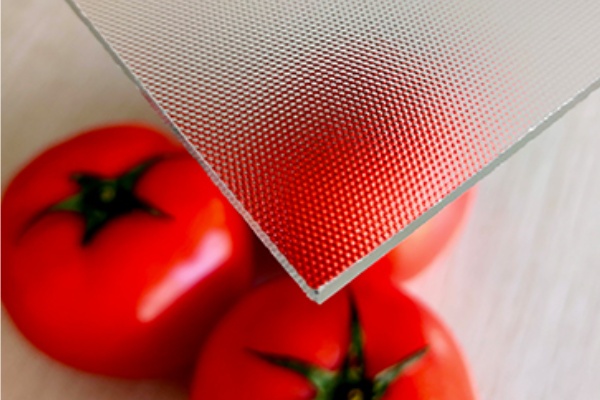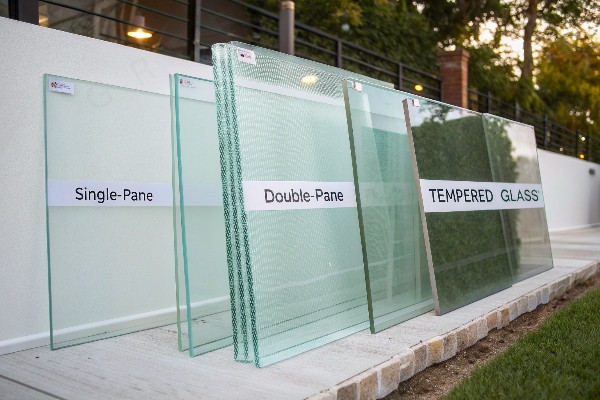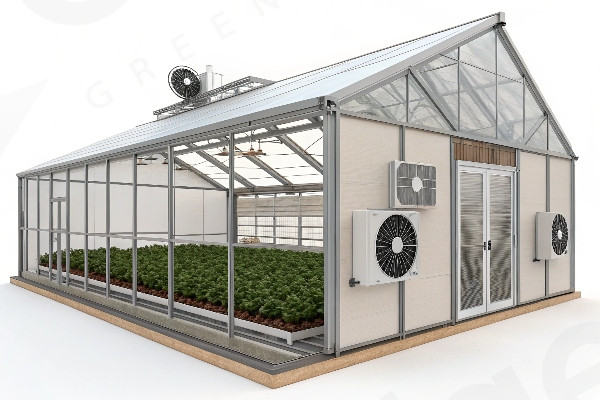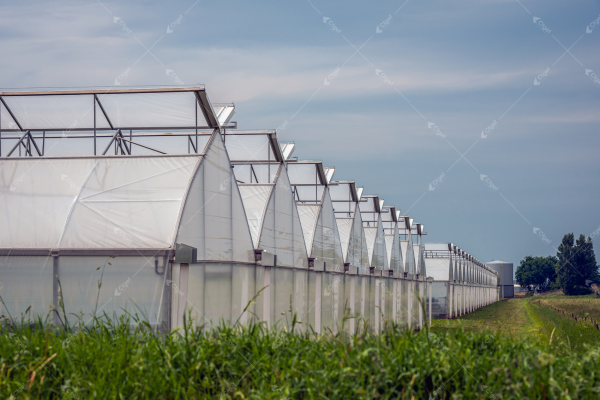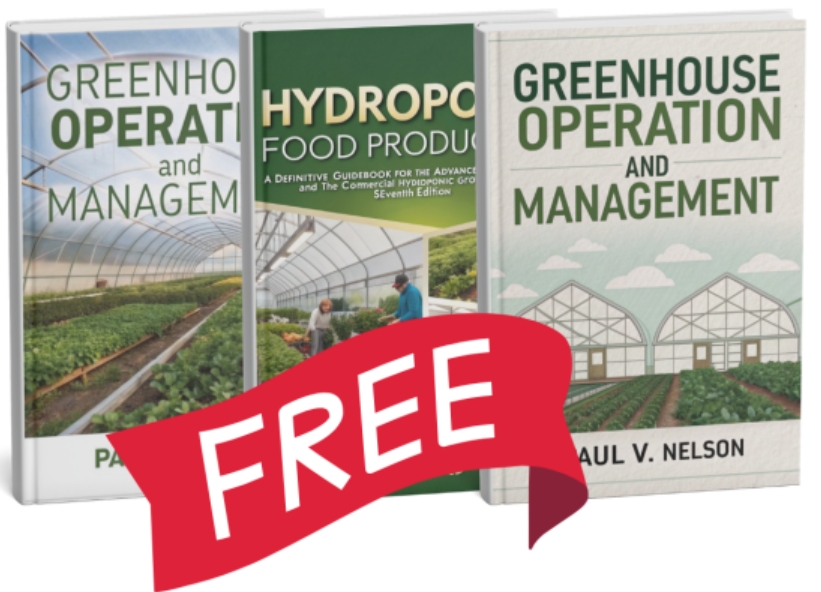Why Ventilation is Important for a Greenhouse?
Proper ventilation helps to:
- Regulate temperature and humidity inside the greenhouse.
- Improve CO₂ exchange for better plant photosynthesis.
- Reduce pest and disease risks by maintaining air circulation.
Creating the ideal environment within a greenhouse is paramount for successful plant cultivation. While the enclosed nature of a greenhouse offers protection from external elements and allows for climate control, it also presents unique challenges, particularly concerning air quality and circulation. Adequate ventilation is not merely a supplementary consideration; it is a fundamental requirement for healthy and productive plant growth. Understanding the multifaceted importance of greenhouse ventilation is the first step towards optimizing your growing environment.
Creating the ideal environment within a greenhouse is paramount for successful plant cultivation. While the enclosed nature of a greenhouse offers protection from external elements and allows for climate control, it also presents unique challenges, particularly concerning air quality and circulation. Adequate ventilation is not merely a supplementary consideration; it is a fundamental requirement for healthy and productive plant growth. Understanding the multifaceted importance of greenhouse ventilation is the first step towards optimizing your growing environment.
Temperature Regulation: Preventing Overheating and Promoting Consistent Growth
One of the primary functions of ventilation is temperature control. Greenhouses, by their very design, trap solar radiation. While this is beneficial during colder months, it can lead to a rapid and significant increase in temperature during warmer periods or even on sunny days in cooler seasons. Excessive heat can have detrimental effects on plant physiology. It can lead to:
- Stomatal Closure: Plants close their stomata (small pores on their leaves) to reduce water loss through transpiration when temperatures are too high. While this conserves water in the short term, it also restricts the uptake of carbon dioxide, which is essential for photosynthesis. Reduced photosynthesis directly impacts plant growth and development.
- Enzyme Denaturation: High temperatures can cause enzymes, which catalyze crucial biochemical reactions within the plant, to denature and become ineffective. This disruption of metabolic processes can severely hinder growth and even lead to plant death.
- Heat Stress: Prolonged exposure to high temperatures can induce heat stress, manifesting in symptoms like leaf scorching, wilting, and reduced fruit or flower production. Different plant species and even different growth stages within a species have varying temperature tolerances, making consistent and appropriate temperature management through ventilation critical.
- Seed Germination and Seedling Development Issues: Optimal temperatures are crucial for seed germination and the healthy development of young seedlings. Overheating can prevent germination or lead to weak and leggy seedlings that are more susceptible to diseases and environmental stress.
Effective ventilation facilitates the exchange of hot, trapped air with cooler, ambient air, helping to maintain temperatures within the optimal range for your specific crops. This consistent temperature management promotes steady growth, reduces stress, and enhances overall plant health and productivity.
Humidity Control: Minimizing Disease and Optimizing Transpiration
Humidity levels within a greenhouse can significantly impact plant health. While some level of humidity is necessary for plant growth, excessive moisture can create an environment conducive to the development and spread of fungal diseases, such as powdery mildew, botrytis (grey mold), and various leaf spots. These diseases can quickly decimate a greenhouse crop if not properly managed.
- Spore Germination: High humidity provides the ideal conditions for fungal spores to germinate and infect plant tissues.
- Reduced Transpiration: When the air surrounding plants is saturated with moisture, the rate of transpiration (the process by which plants release water vapor) is reduced. Transpiration is essential for the transport of water and nutrients from the roots to the rest of the plant. Reduced transpiration can lead to nutrient deficiencies and stunted growth.
- Condensation: Excessive humidity can lead to condensation forming on plant surfaces, particularly during temperature fluctuations between day and night. This moisture can create a film that encourages fungal and bacterial growth.
Ventilation plays a crucial role in regulating humidity by allowing moist air to escape and drier air to enter. This constant exchange helps to maintain humidity levels within an acceptable range, reducing the risk of disease outbreaks and promoting healthy transpiration rates. Proper air circulation, achieved through ventilation, also helps to dry leaf surfaces, further inhibiting fungal growth.
Carbon Dioxide Replenishment: Fueling Photosynthesis
Photosynthesis, the process by which plants convert light energy into chemical energy in the form of sugars, is the foundation of plant growth. Carbon dioxide (CO2) is a vital ingredient in this process. In a closed greenhouse environment, plants rapidly consume the available CO2, especially during periods of high photosynthetic activity (i.e., sunny days). If CO2 levels are not replenished, the rate of photosynthesis will decline, leading to reduced growth rates and lower yields.
Ventilation provides a continuous supply of fresh air, which contains the ambient atmospheric concentration of CO2 (approximately 400 parts per million). This constant influx of CO2 ensures that plants have an adequate supply for optimal photosynthesis, maximizing their growth potential and productivity. While CO2 enrichment systems can be used in some commercial greenhouses, natural and mechanical ventilation are essential for maintaining a baseline level of CO2 and preventing depletion.
Air Circulation: Preventing Stagnation and Promoting Uniformity
Beyond the exchange of air, the movement of air within the greenhouse is also critical. Poor air circulation can lead to:
- Temperature Stratification: In poorly ventilated greenhouses, warmer air tends to rise and become trapped at the top, while cooler air settles at the bottom. This temperature stratification can create uneven growing conditions, with plants at different heights experiencing significantly different temperatures.
- Humidity Pockets: Stagnant air can lead to the formation of localized pockets of high humidity, even if the overall humidity level in the greenhouse seems acceptable. These microclimates can still favor disease development.
- Weakened Stems: Gentle air movement helps to strengthen plant stems by creating a slight stress that encourages the development of stronger supporting tissues. Plants grown in completely still air tend to be weak and leggy.
- Reduced Pollination: Air movement can aid in the pollination of certain crops by helping to distribute pollen.
Effective ventilation, both natural and mechanical, promotes consistent air circulation throughout the greenhouse. This helps to equalize temperature and humidity levels, reduce the risk of disease, strengthen plants, and improve pollination rates. Circulation fans, even when used in conjunction with natural ventilation, can play a significant role in ensuring uniform air movement.
In conclusion, greenhouse ventilation is not just about cooling the air; it is a complex and vital process that influences temperature, humidity, CO2 availability, and air circulation. Each of these factors directly impacts plant health, growth rate, disease susceptibility, and ultimately, the productivity of your greenhouse. A thorough understanding of why ventilation is important is the foundation for implementing effective ventilation strategies.
Common Greenhouse Ventilation Methods
| Ventilation Type | Features | Efficiency | Cost |
|---|---|---|---|
| Natural Ventilation | Uses roof & side vents, relies on wind & thermal lift | Medium | Low |
| Mechanical Ventilation | Uses exhaust fans & intake fans to regulate airflow | High | Medium |
| Hybrid Ventilation | Combination of natural + mechanical for optimized airflow | Very High | High |

